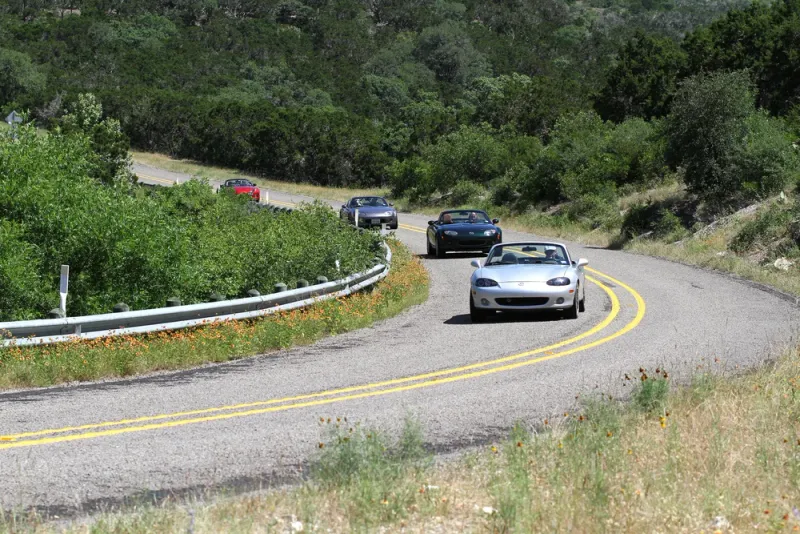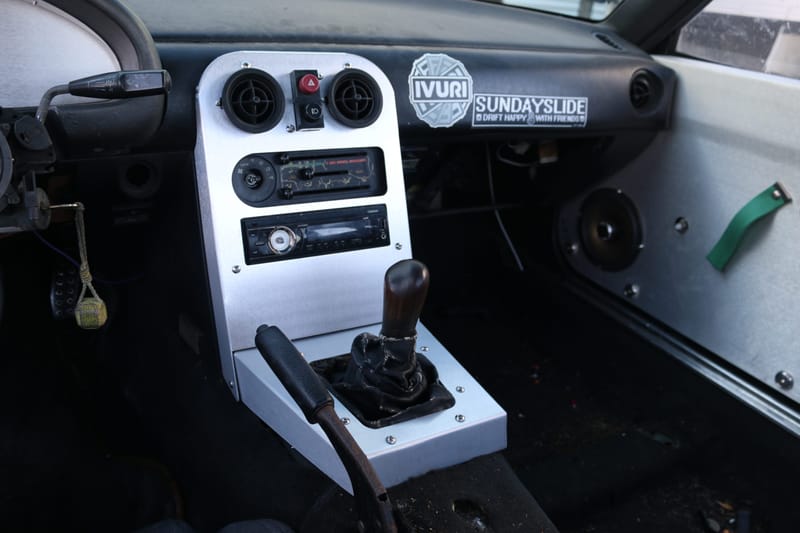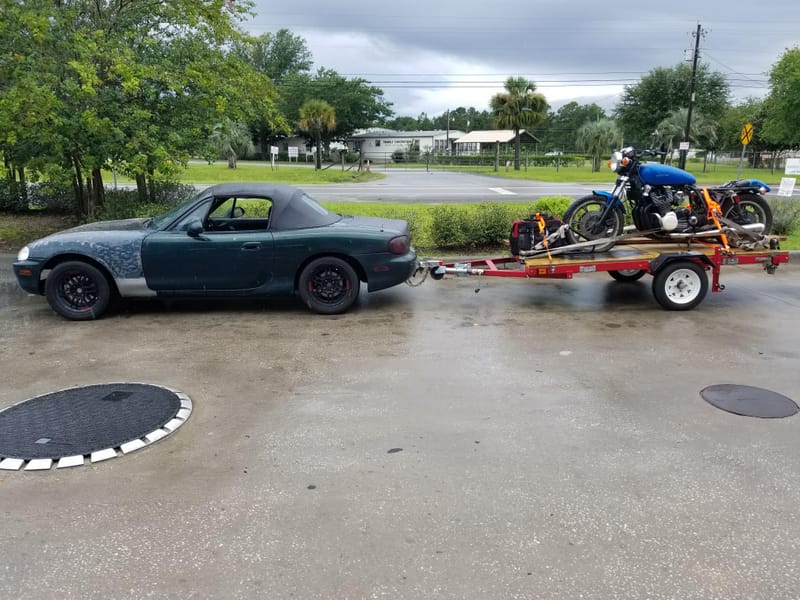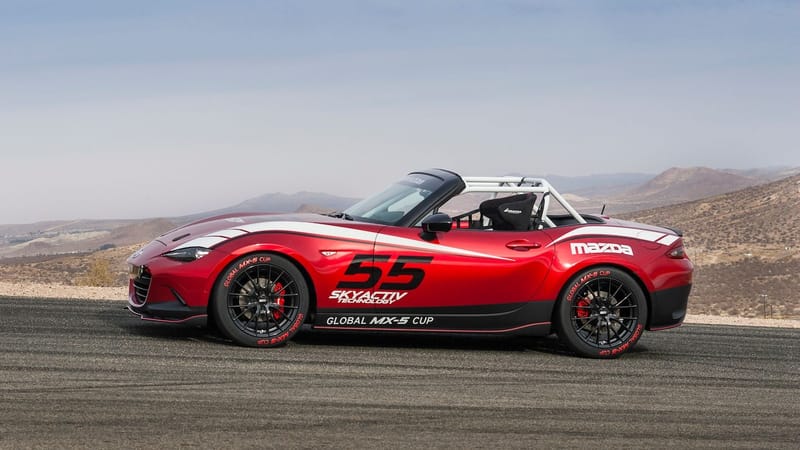Child-Seat Compatibility Guide for Miata Parents
Because the Miata has no rear seat, any child restraint must go up front—triggering strict rules. If you must carry a child in a Miata, the passenger airbag must be switched off and both the car manual and CRS manual followed precisely.
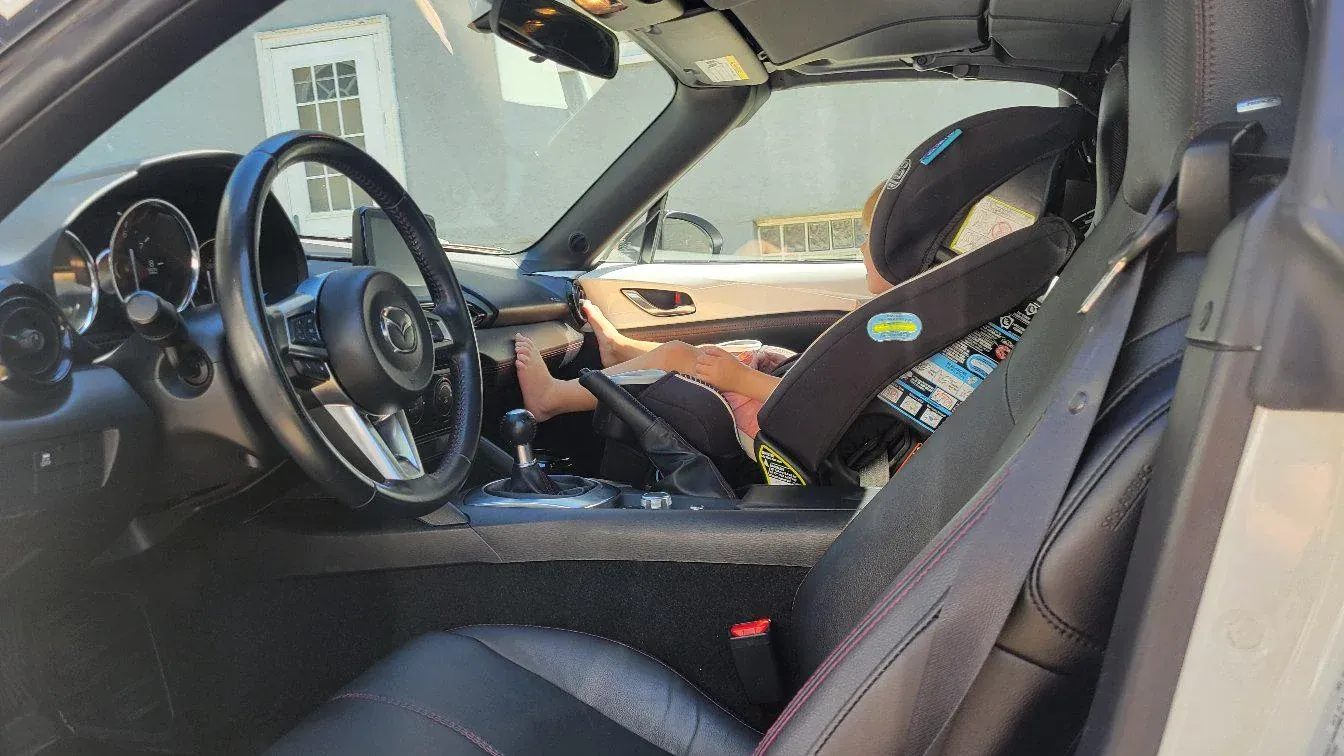
A Miata has no back seat. That means any child restraint system (CRS) would have to ride in the front passenger seat, which triggers strict rules. In the U.S., child-passenger laws are set by each state, but safety doctrine comes from national guidance: children under 13 belong in the back, and a rear-facing seat must never sit in front of an active airbag. If you have no alternative but to carry a child in a two-seater, the passenger airbag must be deactivated/confirmed OFF, and the installation must follow the vehicle owner’s manual and the car-seat manual exactly. Some states also add their own conditions even for two-seaters, so you should check your state’s specifics.
U.S. Law & Safety
- State laws: All states require age/size-appropriate restraints and many say kids must ride in the rear seat when one is available. Fines, exemptions, and ages vary by state.
- National safety guidance:
• Under 13 → back seat is the default.
• Rear-facing + active airbag = never.
• Forward-facing seats should use a top tether whenever one is provided; that tether is a critical part of how the seat protects a child. - Airbag on–off controls: Two-seaters commonly provide a factory way to disable or confirm the passenger airbag OFF state precisely for scenarios where a child must ride up front.
What’s Realistic by Miata Generation (U.S.)
NA (1990–1997)
No LATCH/ISOFIX and no front tether anchor. Any CRS would be a seat-belt install in front. Treat rear-facing as airbag-OFF-only and confirm your state allows front-seat placement when no rear seat exists.

NB (1999–2005)
U.S. NB models provide a keyed passenger airbag deactivation switch. There’s still no LATCH up front and no front tether anchor. Plan on seat-belt (ALR) installs only, and set the airbag to OFF whenever the CRS orientation requires it (for example, rear-facing).
NC (2006–2015)
Owner’s manuals describe using the seat belt’s automatic locking retractor (ALR) and checking the airbag deactivation indicator after installation. They also warn there’s no front tether anchor, so forward-facing harness mode is discouraged. In practice, manuals clearly support rear-facing with airbag OFF using a seat-belt install.
ND (2016–present)
U.S. ND models provide no LATCH and no top tether for the passenger seat. Installs are seat-belt-only, and you must verify the “Passenger Air Bag OFF” indicator after installing a CRS. Because there’s no tether anchor, a forward-facing harness seat up front is not recommended.

Note: Some non-U.S. markets show ISOFIX and a passenger-side top tether in the manual. This guide covers U.S. cars only.
Seats That Tend To Fit in a Miata
Small cabins reward narrow shells and short bases. Popular choices among techs and Miata owners include:
- Clek Fllo (convertible): Narrow seat with a compact front-to-back footprint when configured as allowed by the seat’s instructions, helpful for dash clearance.

- Diono Radian 3R / 3R SafePlus (all-in-one): About 17 inches wide; slim through the shoulders. The tall shell can make front-to-back fit the main challenge.

- Cosco Scenera NEXT (convertible): A budget, very narrow option with a short base, often chosen for tight spaces.

Key reminder: In U.S. NC and ND Miatas, the front seat has no tether anchor. Since forward-facing seats are meant to be used with a tether when one is provided, the practical takeaway is to avoid forward-facing harness mode up front in these cars and stick with rear-facing (airbag OFF) until your child is booster/belt-ready under your state’s rules and the seat’s instructions.
How to Set Up an Install
Always follow the car-seat manual and the vehicle owner’s manual first. If anything here conflicts, the manuals win.
NB , Key Switch + ALR Belt
Move the passenger seat all the way back, keep the backrest upright, and use the ignition key to turn the passenger airbag OFF before placing a rear-facing seat. Confirm the deactivation light stays on with the ignition. Install using the ALR: pull the shoulder belt to full extension to engage locking mode, then let it retract while pressing down on the seat. At the belt path, the seat should move less than about an inch. Do not improvise a tether point.
NC , Indicator + ALR Belt
Same seat position strategy. Install with the ALR and then check the airbag status indicator to confirm deactivation. Because there’s no front tether anchor, skip forward-facing harness mode in this car.
ND , Belt-Only, Verify “Passenger Air Bag OFF”
Install with the seat belt (ALR), there’s no LATCH and no tether up front. After securing the CRS, switch the ignition on and confirm the “Passenger Air Bag OFF” light is illuminated. If the light doesn’t confirm OFF, remove and reinstall per the manual until it does. Do not run a forward-facing harness that requires a tether.
Fitment Tricks That Pay Off
- Seat position: Passenger seat fully rearward, backrest upright. This improves dashboard clearance and helps you hit the correct angle.
- Lock the belt correctly: To use ALR, pull the shoulder belt to full extension, then feed it back while compressing the seat so it ratchets tight.
- Indicator checks are mandatory: On switch or sensor systems, you must see the OFF status after the CRS is installed. If you don’t, adjust the install, don’t drive until it’s right.
- Pick short-base designs: Favor convertibles with short bases and allowed configurations that reduce front-to-back length. Aim for a stable install that doesn’t press into the dashboard.
Hard “Don’ts”
- Never place a rear-facing seat in front of an active airbag.
- Don’t use a forward-facing harness in front when there’s no tether anchor (e.g., U.S. NC/ND).
- Don’t invent a tether point or clip to random hardware. If the manual doesn’t list a front anchor, there isn’t one.
If You Have To Bring a Child in Your Miata
Best practice is still to avoid front-seat child passengers when possible. If you must: choose rear-facing where permitted, set or confirm the passenger airbag OFF, perform a belt-based install correctly, verify the indicator, and then get the setup checked by a certified Child Passenger Safety Technician (CPST). A hands-on inspection is the fastest way to validate both your install and the car’s airbag-OFF logic.
This guide translates U.S. child-passenger rules and safety doctrine into Miata-specific reality. It does not replace your owner’s manual or your car-seat manual, those two documents always have the final say. In a two-seat roadster, details like the airbag-OFF indicator, belt-locking technique, and the presence (or absence) of a tether anchor make the difference between “seems fine” and actually safe.

